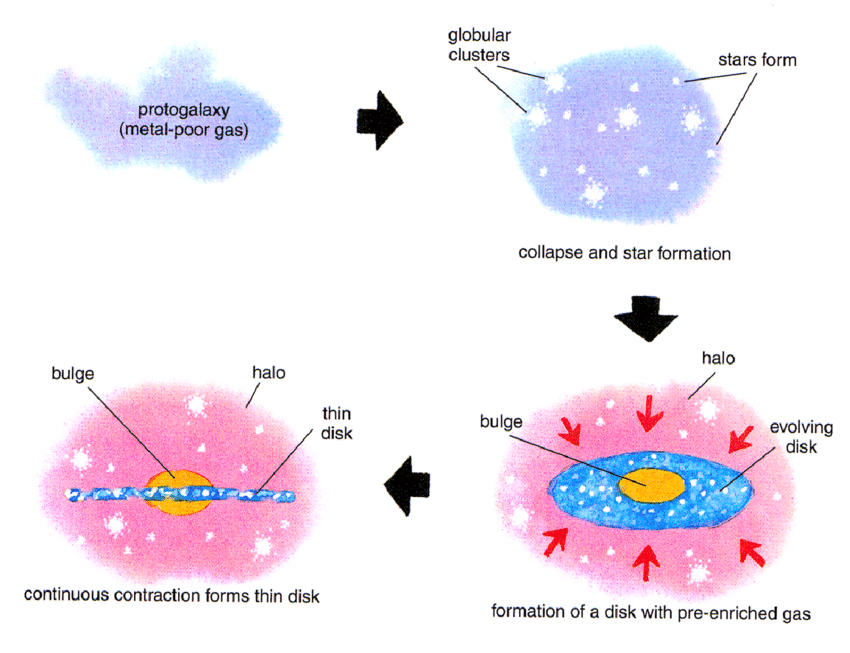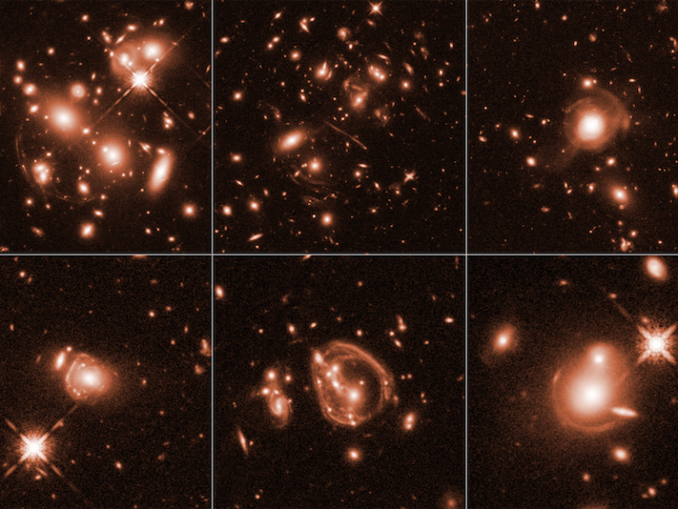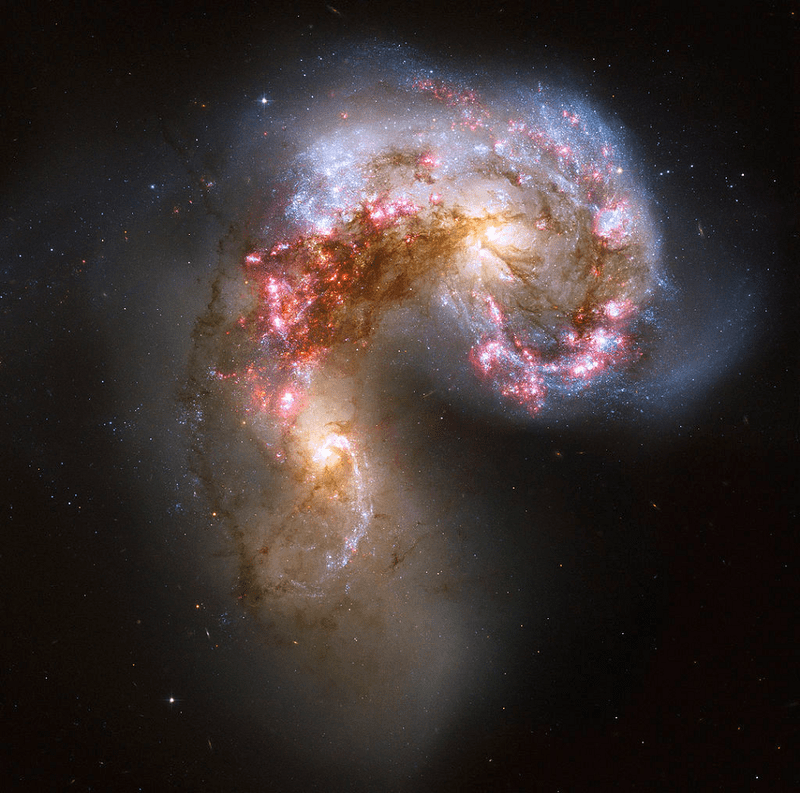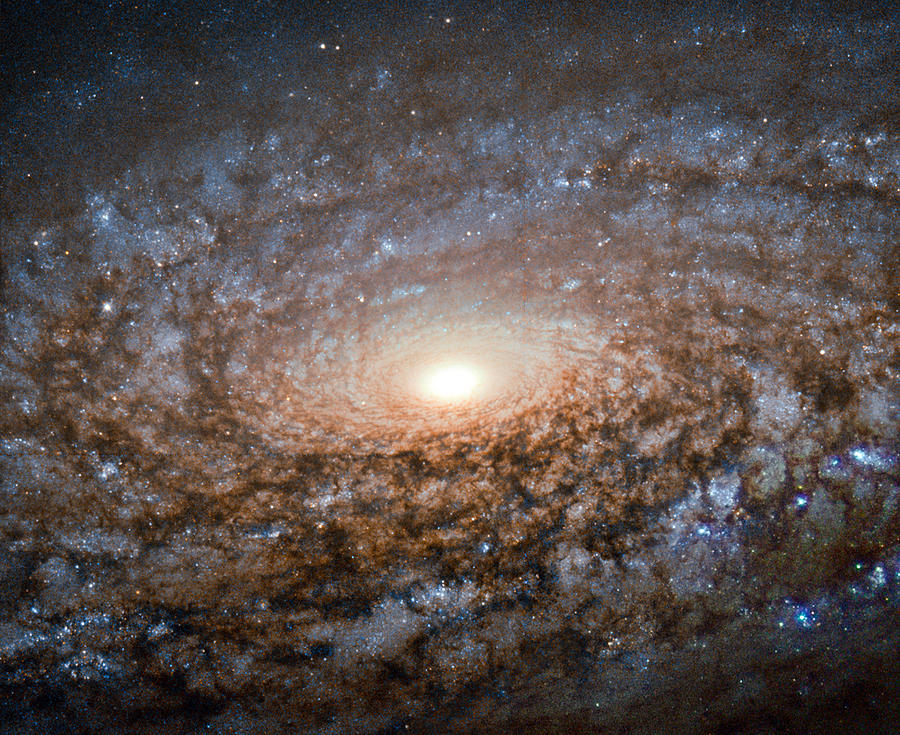
Ever since astronomers realized that the mysterious, fuzzy objects known as “spiral nebulae” were, in fact, separate galaxies beyond our own, we’ve sought to understand the stories of galaxies.
We’ve since discovered that most galaxies are found in galaxy clusters. There are two types: rich clusters, which are home to thousands of galaxies, and poor clusters like our own “Local Group,” which are home to only a few dozen to a few hundred galaxies.
We’ve also discovered that collisions between galaxies are quite common, and can drastically alter their shapes.
And we’ve observed something even more curious. Spiral galaxies, like our own Milky Way, are most often found in poor clusters. Rich clusters are dominated by elliptical galaxies.
It would seem that spiral galaxies thrive best in uncrowded galactic environments.
But what can that tell us about galactic evolution?
First, let’s recap the types of galaxies we’re working with.
Our home galaxy, the Milky Way, is a spiral: a pinwheel-shaped galaxy.

By their very nature, spirals are home to star formation. That’s because their arm patterns are in fact spiral density waves: a type of shockwave caused by the rotation of the galaxy.
As the galaxy’s arms rotate like the hands of a clock, faster-moving stars and interstellar clouds overtake them in their orbits and crash into their denser material. This triggers the interstellar clouds to destabilize and collapse under their own gravity.
This is how stars are born. Individual clouds become the birthplaces of star clusters, groups of sibling stars.
The aptly named irregular galaxies are also home to interstellar clouds and star formation.
Then, on the other hand, we have elliptical galaxies.

Spiral galaxies are disk galaxies; that is, they are flat, like a pizza. They are only “circular” in one dimension of measurement. Elliptical galaxies, on the other hand, are round, like a ball. No matter which way you look at them, they’re…well, elliptical.
But there’s another important reason to differentiate ellipticals from spirals. Notice that they have no spiral density waves. In fact, they are (in most cases) entirely devoid of interstellar dust clouds.
That means they can’t make new stars. Which means that we will not find young stars within them.
Already, we can eliminate a few old hypotheses about galactic evolution.
Astronomers once thought that galaxies normally evolve from one type into another. But this doesn’t make much sense, and I’ll show you why.

Consider the idea of an elliptical galaxy evolving into a spiral galaxy or an irregular galaxy. What would need to happen for this to work?
Elliptical galaxies have no interstellar dust clouds, and thus, no young stars. They would need to somehow acquire those dust clouds in order to form spiral density waves and become spirals or even irregulars. They would also need to somehow settle down from a ball shape into a disk.
Then…maybe it goes the other way around? Could a spiral or an irregular naturally evolve into an elliptical?
There’s a problem with that: we know that spiral and irregular galaxies do contain old stars. They are not “young” as a whole; they’re simply capable of forming young stars.
If spirals naturally evolved into ellipticals, we wouldn’t see nearly so many nearby spirals in the night sky. Many or most of them would have followed their evolutionary course and become ellipticals instead by now.
That’s even more true for irregulars. About a quarter of the galaxies in the universe are irregular, at least to our knowledge. Clearly, they haven’t naturally evolved into other types of galaxies.
There’s another old hypothesis: the monolithic collapse or top-down hypothesis.

In a nutshell, this hypothesis suggests that the Milky Way and other spirals formed from a single protogalaxy cloud, which collapsed under its own gravity to form the beautiful disk and spiral arms we observe today.
But this hypothesis doesn’t work, either.
The monolithic collapse hypothesis suggests that, as the protogalaxy cloud collapsed, stars that had formed in its outer reaches–the halo–were “left behind,” so to speak. All these stars would have formed at the same time, right along with their host galaxy, and should today be roughly the same age.
Spoilers: they’re not.
Our galaxy and other spirals do, in fact, have “halos,” spherical components that extend beyond each galaxy’s disk. But these halos are home to young and old objects with a wide range of ages.
In fact, in our own Milky Way, some of the halo’s youngest objects are found in its outer reaches! That doesn’t make sense if they formed first and were “left behind” as the galaxy contracted. They must have formed more recently.
That’s why astronomers put together an updated hypothesis for the Milky Way’s formation: the bottom-up hypothesis.

There might, indeed, have been an original “monolithic collapse” that formed the spherical component (the central bulge and halo).
If those parts of the galaxy formed first, from a single collapsing cloud, it would explain why they are–as a whole–older than the disk component.
But the bottom-up hypothesis suggests that after the halo formed and collapsed to form the central bulge, new material enriched the galaxy.
Intergalactic clouds like those in the graphic above would have fallen in towards the Milky Way and interacted with the forming galaxy. They would have settled into orbits around the galactic center, eventually merging to form the disk.
And that’s not all.

Evidence abounds that the Milky Way has gobbled up its own dwarf satellite galaxies. In other words…smaller galaxies have collided with the Milky Way and been absorbed, essentially donating their material.
When we explored galactic collisions, we referred to this as galactic cannibalism–and we discovered that galaxies can merge to form a single large galaxy.
That’s what happens with the Milky Way and its dwarf satellites: two galaxies collide to form a single galaxy. But those small satellite galaxies don’t have enough gravity to interfere with the Milky Way’s shape.
Our spiral neighbor, the Andromeda Galaxy, does.
In about 4.5 billion years, the Milky Way and Andromeda are predicted to collide. Since Andromeda is a large galaxy comparable in size to our own, this will wreak havoc on both galaxies…as depicted in this timelapse.
Note that these two will merge to form a single elliptical galaxy–and that right there is the key.
Spiral galaxies do not naturally evolve into ellipticals. But ellipticals are formed from collisions and mergers between galaxies, especially spirals.
But…how the heck did all the spirals’ dust clouds disappear?
That’s where starburst galaxies come in.
We met the Antennae Galaxies in my previous post. But what I didn’t show you then was the zoomed-in view you see on the right.
See all those bright-pink spots?
Those are emission nebulae, a telltale sign of star formation. What we’re seeing here is interstellar clouds being ionized by young, hot stars.
Remember how stars form in a normal spiral galaxy? It happens when spiral density waves compress interstellar clouds. When two healthy spiral galaxies merge, that effect gets dialed up to 100.
Starburst galaxies are galaxies in mid-collision, absolutely ablaze with star formation.
Some galaxies–dubbed ultraluminous infrared galaxies–take it a step further…

These galaxies, abbreviated as ULIRGs, are deeply shrouded in dust, so they appear very faint at visible wavelengths. But just point an infrared telescope at them, and we see that they are sometimes a hundred times more luminous than our own galaxy. They are the results of mergers between three or more galaxies.
Star formation is so active in starburst galaxies and ULIRGs that they “quickly”–astronomically speaking–use up all their interstellar dust. They’ll no longer be able to make new stars.
That’s how ellipticals lose their dust.
Not only that, tidal forces from the merger will throw their stars’ orbits completely out of whack. Eventually, those orbits will settle into an elliptical pattern. And thus, an elliptical galaxy is formed.
Spiral galaxies, though, are harder to explain.

We do have a general idea of spiral galaxy formation, in the form of the bottom-up hypothesis. But that doesn’t explain how the heck we go from a simple disk galaxy to a galaxy with spiral density waves.
We know that spirals likely haven’t suffered major collisions. That’s how they get destroyed and reshaped into ellipticals, with all their dust used up. As expected, they’re not usually found in rich clusters, where major collisions are common.
Minor collisions, though, have definitely shaped our own galaxy, and it’s still a healthy spiral. It’s possible these minor collisions are actually responsible for creating spiral arms.
Notice a difference between these two spiral galaxies?
NGC 3521, on the left, is a flocculent spiral, a spiral with a sort of “fluffy” appearance. It doesn’t have a strong, two-armed spiral pattern.
NGC 1300, on the other hand, is a grand-design spiral: a spiral with two very pronounced spiral arms.
Spiral galaxies are generally found in poor clusters. But they are very rarely found entirely isolated, without neighbor galaxies. When they are found isolated, they are usually flocculent. They are often rich in dust and gas, but have very little active star formation.
This suggests that the gentle tidal interactions within a small group of galaxies are necessary to produce spiral density waves.
These gentle tides are also probably necessary to produce the unique barred spiral galaxies:




Many spiral galaxies, including our own, have an elongated nucleus rather than a circular one. These are called bars. But mathematical models show that bars aren’t stable. It’s very possible they’re regenerated by interactions with satellite galaxies.
There are also disk galaxies that have no gas or dust, called lenticular galaxies.

Astronomers think that galaxies like this one–cataloged IC 335–are the result of spiral galaxies orbiting through the intergalactic gas and dust in their clusters.
Even though the gas and dust between galaxies is extremely thin and diffuse, it can be enough to strip a galaxy of its interstellar clouds if the galaxy is moving rapidly–for the same reason it hurts to do a belly flop into the ocean from really high up!
Now we know that any one galaxy does not naturally evolve into other types of galaxies. Instead, gentle interactions between disk galaxies and their smaller satellites probably produce spiral galaxies. Collisions between spiral galaxies (and ellipticals) produce elliptical galaxies.
But what if I told you we’ve barely scratched the surface of the phenomena galaxies have to offer?
My next post will be a roundup of the concepts from the last ten or so posts on galaxies, and then we’ll move on to active galaxies–and the supermassive black holes we’ve thus far only peeked at.



